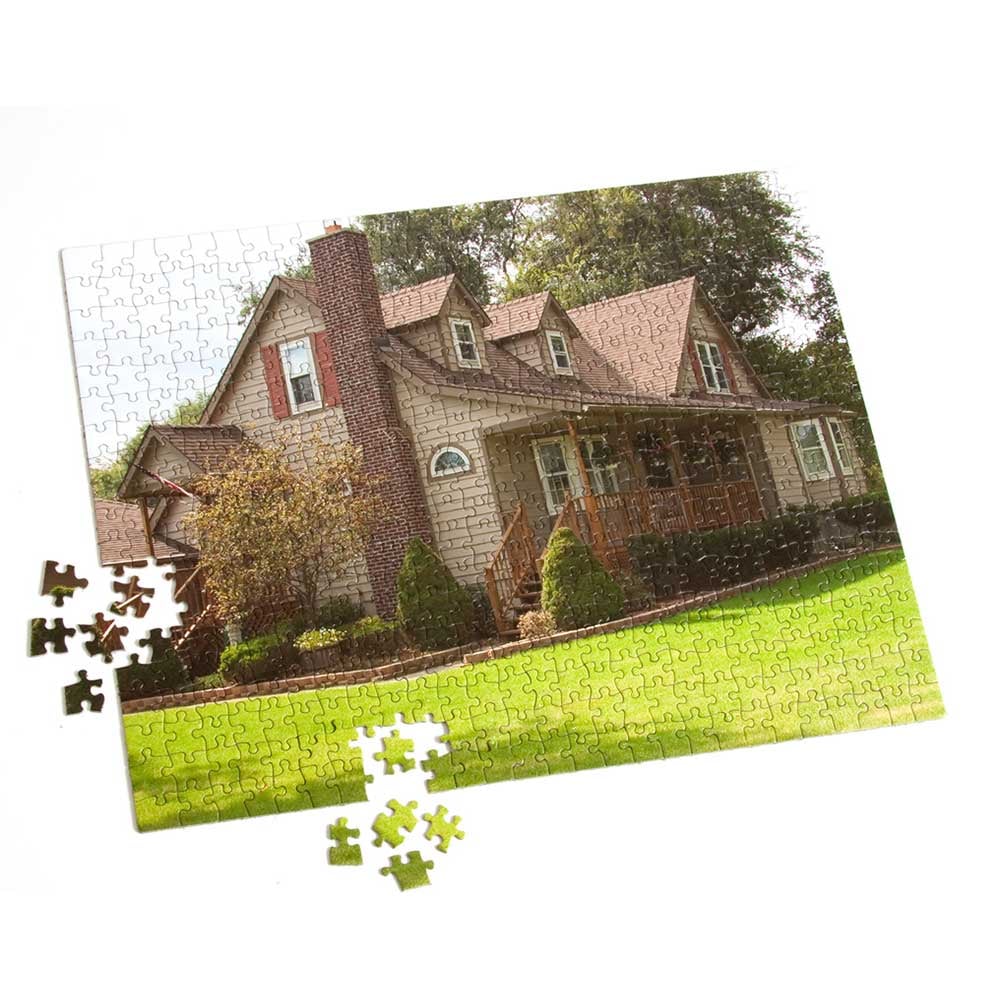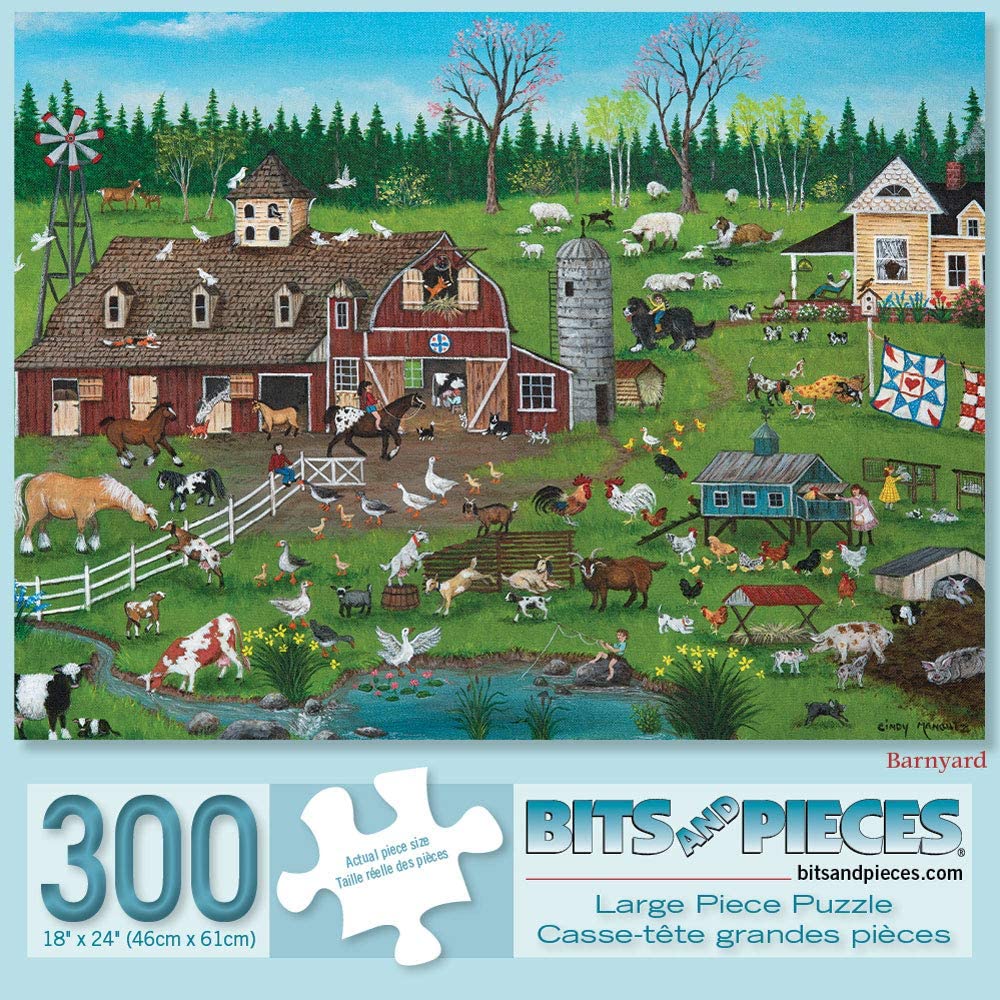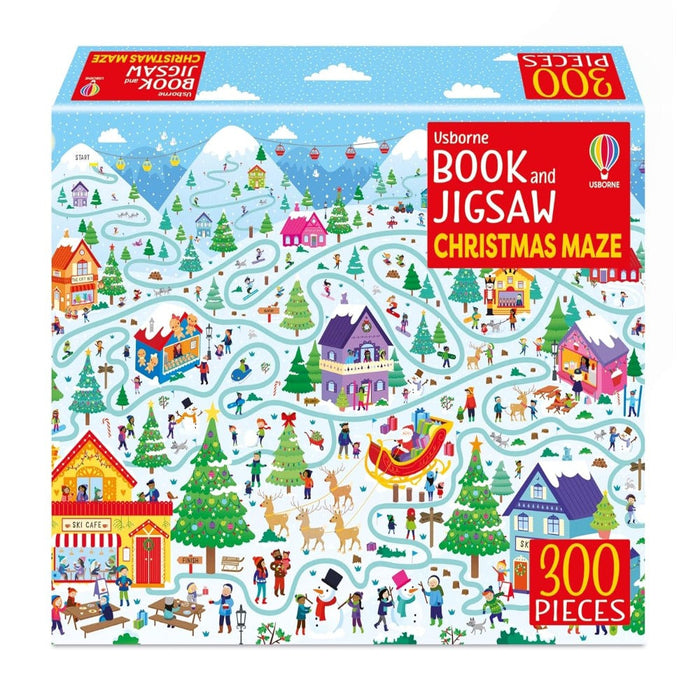The Benefits of Doing 300 Piece Puzzles
Delving into 300 piece puzzles offers numerous advantages that extend beyond simple entertainment. Engaging with these puzzles can enhance cognitive skills and foster a sense of accomplishment. Let’s break down the key benefits:

Boosts Cognitive Function
Solving 300 piece puzzles stimulates the brain, improving memory and problem-solving abilities. It encourages the growth of new neural connections.
Enhances Fine Motor Skills
Arranging small puzzle pieces develops hand-eye coordination. It refines fine motor skills which are valuable for daily tasks.
Increases Attention to Detail
Puzzle enthusiasts learn to recognize patterns and details. This keen attention can transfer to other areas of life, benefiting personal and professional tasks.
Promotes Patience and Perseverance
The challenge of completing a 300 piece puzzle teaches patience. It reinforces the practice of working methodically towards a goal.
Provides Stress Relief
Focusing on a puzzle redirects thoughts from stressors. It acts as a form of meditation, inducing a calm state of mind.
Encourages Family Bonding
300 piece puzzles are optimal for family activity. They offer a chance to bond and collaborate towards a common objective.
Facilitates Learning and Education
Educators can use 300 piece puzzles as learning tools. They integrate fun with education, reinforcing concepts and information retention.
These benefits show that 300 piece puzzles are more than just a pastime. They are a beneficial activity for individuals of all ages, providing mental stimulation and relaxing leisure. Embracing the intricate world of puzzles can lead to personal growth and newfound skills.

Types of 300 Piece Puzzles and Themes
300 piece puzzles come in a wide variety of types and themes, catering to different interests and occasions. Here’s a quick look at some popular categories:
Landscapes and Scenery
Stunning vistas, from majestic mountains to serene beaches, are captured in these puzzles. They can transport you to beautiful places as you piece them together.
Animals and Wildlife
Animal lovers will enjoy assembling pictures of wild creatures and beloved pets. These puzzles not only provide fun but also raise awareness about the animal kingdom.
Art and Masterpieces
Art enthusiasts can appreciate puzzles that feature famous works of art. From classical masterpieces to modern art, these puzzles allow you to recreate iconic paintings.
Cartoons and Characters
Children and the young at heart will adore puzzles with their favorite cartoon characters. These vibrant puzzles are usually full of humor and fun.
Abstract and Patterns
If you love a challenge, abstract designs and intricate patterns will test your skills. These puzzles often feature complex imagery that requires keen attention to detail.
Seasonal and Holiday Themes
Seasonal puzzles are perfect for getting into the spirit of holidays or seasons. Be it Christmas, Thanksgiving, or summer vacations, there’s a puzzle for every occasion.
Historical Events and Landmarks
Learn about significant moments in history or marvel at world landmarks. These puzzles often come with educational elements.
Embracing the diversity of 300 piece puzzles ensures there is something for every puzzler out there. With the myriad of themes available, you’re bound to find one that piques your interest and suits your personal taste.

Recommended Age Range and Skill Levels for 300 Piece Puzzles
300 piece puzzles are versatile, offering various difficulty levels for different ages. Generally, they are well-suited for children aged eight years and above. This age group can handle the task, developing problem-solving skills as they play. Adults and seniors also find these puzzles engaging, as they provide an enjoyable brain workout.
For Children
Children around eight years old usually have the required dexterity and patience to manage 300 piece puzzles. These youngsters benefit from improved concentration and cognitive development while assembling the pieces. However, every child is unique. Some may be ready for such puzzles earlier, and some might need more time.
For Teens and Adults
Teenagers and adults often enjoy the complexity of 300 piece puzzles. For them, it is not only a leisure activity but also a mental challenge. These puzzles can be used as a tool for relaxation or as a brain-training exercise.
For Seniors
300 piece puzzles are excellent for seniors. They can help maintain cognitive function and fine motor skills. Moreover, puzzles can be a social activity, facilitating connections with family and friends.
In terms of skill levels, 300 piece puzzles are great for intermediate puzzlers. Beginners might start with fewer pieces and work their way up. Experienced puzzlers might use these as a quick challenge or as a relaxing activity. Choose the puzzle that suits your skill and interest to ensure an enjoyable experience.
Tips and Strategies for Solving 300 Piece Puzzles
Tackling a 300 piece puzzle can be an enjoyable yet challenging task. Here are some effective tips and strategies to help you conquer these intricate puzzles:
Start with the Edges
Always begin by separating the edge pieces. Constructing the border gives you a clear framework to work within.
Sort by Color and Pattern
Organize your pieces by color and pattern. This method helps you identify where pieces might fit in the bigger picture.
Work in Sections
Divide the puzzle into smaller sections. Focus on completing one section at a time for more manageable progress.
Use a Reference Image
Keep the puzzle’s box or a reference image nearby. It will guide you in placing pieces correctly.
Take Breaks When Needed
If you feel stuck, take a short break. Returning with fresh eyes can make spotting connections easier.
Involve Friends or Family
Turn your puzzle-solving into a social event. Multiple perspectives can speed up the process.
By following these strategies, you’ll enhance your puzzle-solving experience and enjoy the satisfaction of completing a 300 piece puzzle.
The Social Aspect of Puzzle Solving
The allure of 300 piece puzzles extends beyond solitary enjoyment; they inherently promote social interaction. Gathering around a sprawling puzzle can transform an individual challenge into a collective mission, fostering teamwork and communication. Let’s explore the social benefits puzzle-solving can offer.
Building Relationships
When family or friends join in on piecing together a puzzle, it builds stronger bonds. Working towards a common goal, individuals share strategies, celebrate successes, and even work through frustrations together. This shared experience can improve relationships and create lasting memories.
Encouraging Teamwork
Puzzle-solving in a group setting requires cooperation. Participants must agree on where pieces go, discussing and considering each other’s viewpoints. This collaborative effort is a fantastic way to enhance teamwork skills in a relaxed environment.
Enhancing Communication Skills
As group members converse about puzzle strategies, they naturally refine their communication skills. Sharing thoughts on piece placement or pattern recognition encourages clear and effective dialogue, a skill that is invaluable in all aspects of life.
Learning from Different Perspectives
Every puzzler has a unique approach. Observing how others tackle the puzzle can provide new techniques and perspectives, fostering a learning environment rich with diversity. Interacting with a variety of puzzling styles can be an enlightening experience, broadening one’s puzzle-solving repertoire.
Embracing puzzle-solving with others is not just about completing the image on the box; it’s about the conversations, the laughter, and the teamwork that unfolds along the way. So, next time you open a 300 piece puzzle, consider inviting others to join in. The joy of puzzling is amplified when shared.
Integrating 300 Piece Puzzles Into Educational Activities
300 piece puzzles are not just for fun; they’re also great learning tools. Teachers and parents can use them to enhance various educational activities. Incorporating puzzles into lesson plans promotes active participation and deepens understanding of concepts. Here’s how you can make the most of 300 piece puzzles in educational settings.
Making Learning Interactive
Using puzzles, educators can create interactive learning experiences. They can encourage students to work together to complete puzzles that relate to the topics they’re studying. For instance, puzzles of world maps can complement geography lessons, helping learners to visualize different regions and countries.
Developing Problem-Solving Skills
Puzzles are an excellent way to develop problem-solving skills. By figuring out where each piece fits, students learn to approach problems methodically. This skill is invaluable not just in academia, but in everyday life.
Boosting Memory and Retention
As students work on 300 piece puzzles, they improve their memory. Puzzles that include historical events or scientific concepts can help cement this information in their minds. It’s a fun way to retain facts and details that might otherwise be forgotten.
Encouraging Patience and Persistence
Educational puzzles teach students to be patient and persistent. They learn the satisfaction of persisting with a challenging task until it’s completed. This can foster a positive attitude towards learning.
Enriching Curriculum Themes
300 piece puzzles come in various themes that can enrich any curriculum. A puzzle depicting a famous artwork can be a starting point for art history discussions. Animal puzzles can spark conversations about biology and ecosystems.
By integrating 300 piece puzzles into education, learning becomes an adventure. Students not only absorb information but also develop critical life skills. It’s a win-win for educators seeking dynamic teaching methods.
Where to Find the Best 300 Piece Puzzles
Finding the best 300 piece puzzles can be a delightful quest for enthusiasts. You can explore a variety of sources to find puzzles that fit your interest and skill level. Let’s dive into where you can search for these captivating challenges:
Specialty Stores
Head to specialty stores that focus on games and puzzles. Staff often offer helpful advice and recommendations.
Online Retailers
Online shops have vast selections. From popular to niche themes, they cater to all tastes. Use search filters to narrow down options.
Local Toy Stores
Visit your community toy stores. They may carry unique puzzles that you won’t find elsewhere.
Second-hand Shops
Thrift stores or garage sales can surprise you with puzzles. They’re great for finding deals on discontinued or rare editions.
Educational Supply Stores
Stores catering to education often stock puzzles. They usually have themes that complement learning and development.
Bookstores
Some bookstores carry puzzles alongside books. Check the section often dedicated to brain teasers and games.
Puzzle Clubs
Join a local or online puzzle club. Members often trade puzzles, making it a social and economical option.
Gift Shops
Museums and tourist attractions have gift shops with puzzles depicting their exhibits or highlights.
Remember to look for quality and durability when selecting 300 piece puzzles. High-quality puzzles offer a better fit and are more pleasant to work with. Happy puzzling!
Preserving and Displaying Completed 300 Piece Puzzles
Once you conquer a 300 piece puzzle, you might wish to preserve and display your accomplishment. Showing off your completed puzzles can add a personal touch to your space. Here are simple ways to do this:
Glue and Frame Your Puzzle
Apply a layer of puzzle glue over the pieces. Let it dry to hold them together. Then, place your puzzle in a frame and hang it on a wall.
Mount on a Backing Board
If you prefer not to use glue, mount the puzzle on a backing board. You can use double-sided tape or adhesive sheets to keep the pieces in place.
Showcase in a Portfolio
For those who finish many puzzles, consider a portfolio. Slip your puzzles into clear plastic sleeves and compile them in a binder.
Display on a Puzzle Stand
Find a puzzle stand to prop up your puzzle. This method lets you easily move and display it on different surfaces.
Create a Puzzle Table
Seal your puzzle with a transparent tabletop. This turns it into a unique and functional piece of furniture.
Rotate Your Collection
Keep your displays fresh by rotating puzzles. This gives each puzzle its moment to shine and keeps your decor dynamic.
Preserving your 300 piece puzzles lets you celebrate your effort. It also adds charm to your living or working spaces. Choose the method that best fits your style and enjoy your puzzle art!
